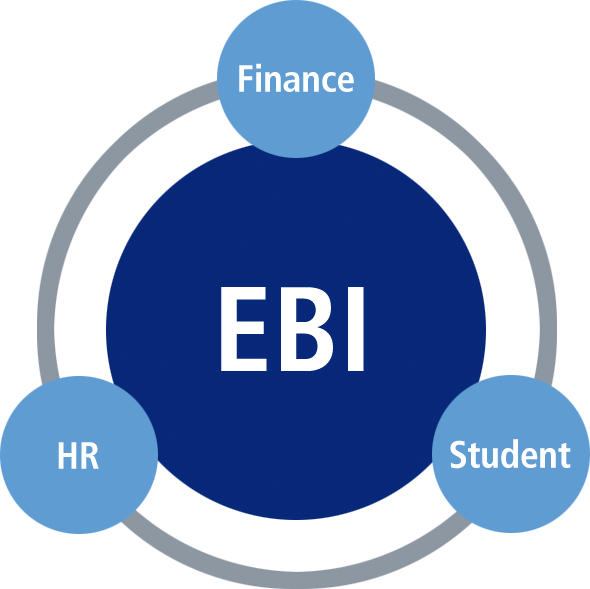
BI – EBI – OBIEE –– Oh me, oh my! Sounds like “Old MacDonald” had a few too many. Instead, we have a few too many acronyms that need to be defined.
Several members of the Finance department partnered with the Enterprise Applications Data Warehouse team on the first phase of the Emory Business Intelligence implementation (EBI). The first phase of the project was focused solely on validating and loading financial information from Compass into a new data warehouse pre-built for PeopleSoft data and standing up a new reporting/analytics tool (OBIEE—pronounced like “Obi” Wan Kenobi).
Along with many stakeholders on campus, the project team identified an initial set of reports that were released throughout 2014. With the completion of the last deliverable of that set, we were able to decommission the legacy labor data warehouse as well as FORS to consolidate into one single source for accurate financial information and a process to ensure consistent data standards, controls and definitions. Feedback on the first release identified efficiencies as large as “6 hours typically spent on producing one report for leadership that is now sitting on their dashboard every day.”

The next step for this phase of the project is a set of deliverables in a second release that will include integrating data from the Effort Reporting system which brings us closer to the true definition of Business Intelligence (BI)—transforming raw data into useful information to be used by the business.
While the finance team continues to focus on future releases in their pipeline, the LITS Data Warehouse team has partnered with the Office of the Registrar, Institutional Research and the Student Information Systems team to begin the second phase of the implementation, focusing on student data from OPUS.

The initial scope of this project includes data for Graduation/Retention, IPEDS and Common Data Set. The data required for these core Institutional Research reports cover the foundation of student information. The first deliverable which is currently available to a limited audience is the Degree Dashboard. As we introduce more subject areas, we will be able to mature our BI practice and answer both operational and strategic questions, such as:
- Which degrees yield the most in alumni contributions?
- What is the institutional cost of a degree?
- What business drivers do we need to focus on to improve graduation/retention percentages?
The next phase will be bringing in human resource data sourcing from PeopleSoft HR. However, with the growing need for data, there is no final or last phase in adopting a business intelligence practice. As we connect with more data sources, we will continue to help build a more informed university by assessing everything from student enrollment and performance to predicting future earnings potential of financial aid investments, all while reducing administrative workload.
Leave a Reply